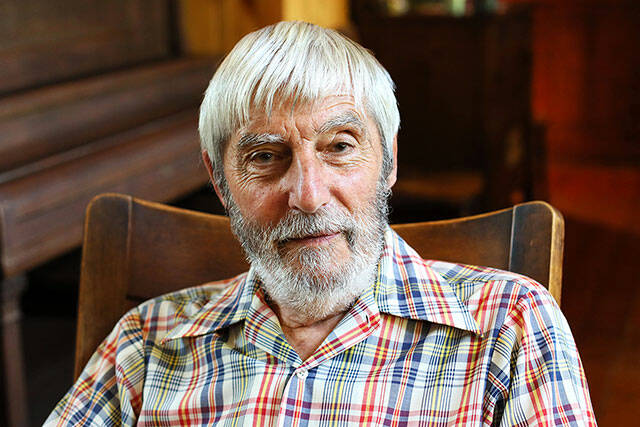When I was a kid, there was five words that my mom would say to me and my brother when she woke us up in the morning after the heavens above delivered a miracle: “It snowed – school is cancelled.”
It was like those words were sung by angles.
Remember that this was in the early 1950s, before satellite pictures of storms and computer forecasts. Back then, it was still possible to have surprise snow storms, unlike today when show can be forecast days in advance.
After I became a scientist, husband and father and I no longer looked at snow through kid’s eyes, I realized that it could snow in a lot of different ways, and how kids would rate snow is opposite to how most adults would rate it.
So having asked the house to rate the least desirable snow storms to the most desirable and then reversing the list to get the order correct from a kid’s point of view, I present the list from the least to the most desirable.
SLUSH:
Arctic air has moved into Enumclaw and the days and nights are below freezing. A storm from the Pacific moves onshore and it is at first cold enough in Enumclaw to snow on the ground.
It snows because in the first part of the storm the surface wind is offshore, keeping the low-level arctic air in place over Enumclaw. Unfortunately, as the storm moves over Enumclaw the surface winds turn onshore and the warmer air from the ocean will reach Enumclaw turning the snow to rain.
This change is especially disappointing if the snow falls while kids are in school and just as school lets out, the snow turns to rain and a beautiful snowfall turns to slush. I remember as a kid trying to play in slushy wet snow and having my clothes and mittens soaked through giving up and going inside, very dejected.
ACCEPTABLY DAMP:
A Pacific storm is cold enough that even though it rains with the offshore winds in the first part of the storm once the cold front goes through and the winds turn onshore the rain turns to snow. At least kids get to play in the snow, but there is no really cold air on the surface and the temperatures stays above freezing. This snow makes for damp play and soon gloves and clothes become damp and cold. The one advantage for kids is that the wet snow packs together and makes great snowmen and snowballs.
POWDER AND FLUFF:
Arctic air is over Western Washington and weak storms are moving into our region from the northwest. This will bring us snow at time, but only a few inches, not a lot. The colder air from the northwest is also drier then the warmer and wetter air from the west or southwest. This type of snow is fun for kids as it remains cold and not slushy, but it isn’t the holy grail of snow situations.
THE ‘GOLDILOCKS’ ZONE:
Now we get to the holy grail of snowstorms. Arctic air is a necessary ingredient for a satisfying snow storm, as always, but the artic air is just to the north of Enumclaw, closer to the Canadian border. A very large storm comes from the west loaded with moisture. The low center of the storm moves into mouth of the Columbia River. This way the wind stays northerly over Enumclaw and the arctic air moves south to make the surface cold enough for it to snow on the ground.
Eventually the storm moves away to the east without the surface wind ever shifting away from northerly.
With this type of snowfall kids can look forward to inches or even a foot or more of snowfall, and several days of below freezing temperatures to enjoy the snow. As a bonus schools will probably close for several days. But, all is not perfect in kidland as the cold temperatures eventually dries the snow, making it harder to pack snowballs.
Another indication of this snowfall is that eventually kids get tired of playing in the snow and opt to say inside.


